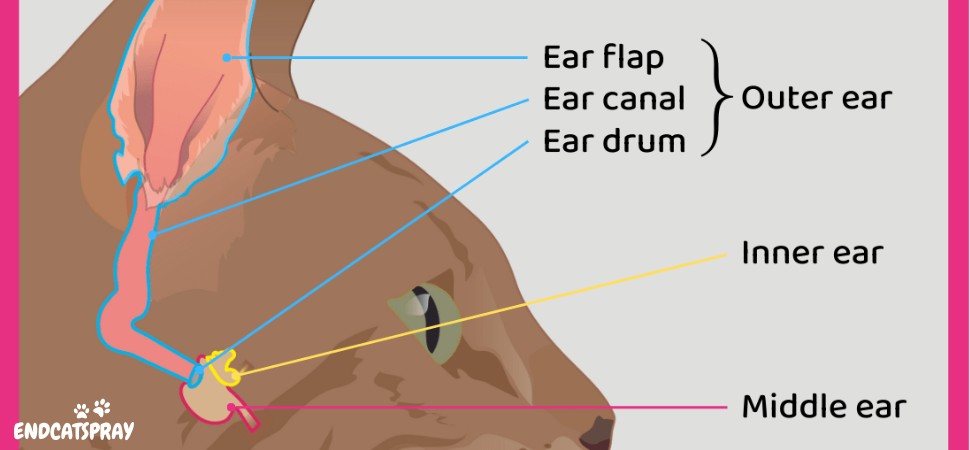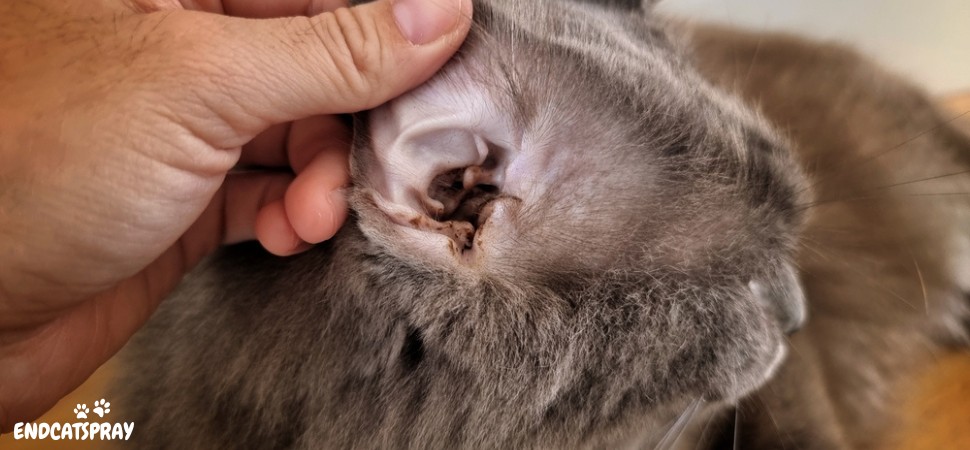Typically, cats do not get ear infections; they occur very rarely. However, when they do, the primary reason can be something complex. Infections of the outer ear or external ear canal are caused by yeast and bacteria, which are standard in dogs compared to cats. The infections of the external ear canal are known as otitis externa.
Ear mite infestation is said to be the most common cause of cat otitis externa. Suppose the vet has found ear mites, which are prevalent in about 50% of ear infections in felines. In that case, he must properly examine what is causing the ear infection.
Key Takeaways of cat ear infection
- A cat will feel extreme pain and discomfort from an ear infection.
- You might notice a yellow, brown, or black discharge from her ear.
- Your vet uses an otoscope to diagnose the ear infection in your feline.
- The cat will be sedated if your vet sees a foreign material stuck in her canal.
What are the medical signs of ear infection?
When your cat suffers from an ear infection, she will feel discomfort and pain, and her ear canal becomes very sensitive. Numerous felines scratch their ears and shake their head to eliminate the fluid and dirt from their ear canal.
Furthermore, their ears will turn red and swollen and might develop an unpleasant odor. You may also notice a yellow, brown, or black discharge from their ears.
Can you purchase ear drops?
No, proper diagnosis of the accurate cause of the issue is essential to choose the suitable treatment. You need to be aware of the type of infection to consider which drug you can use.
How do you diagnose an ear infection in cats?
The vet will check the ear canal of your feline with an otoscope, a device that gives light and magnification. It provides a good sight of her ear canal. It permits your vet to check whether the eardrum is undamaged or if there is any foreign material or tumor inside the ear canal.
If your vet notices any dirt, inflammation, or discharge inside the ear canal, doing a detailed examination might not be possible. In similar cases, or if a cat’s ears become very painful and she does not permit ear inspection, general anesthesia or sedation will be required.
Treatment:

The cytology and otoscopic inspection will tell your vet what treatment method should be adopted. Suppose he examines that a foreign material is stuck in her ear canal. In that case, your feline can be anesthetized to remove that.
Particular medication can be recommended for fungi or bacteria. However, over one kind of infection is recognized in some cases, and this condition needs numerous medications. In addition, a few of them include both antifungal and antibiotic treatments along with an anti-inflammatory agent.
References:
https://www.webmd.com/pets/cats/ear-infections-in-cats-causes-treatment-and-prevention










